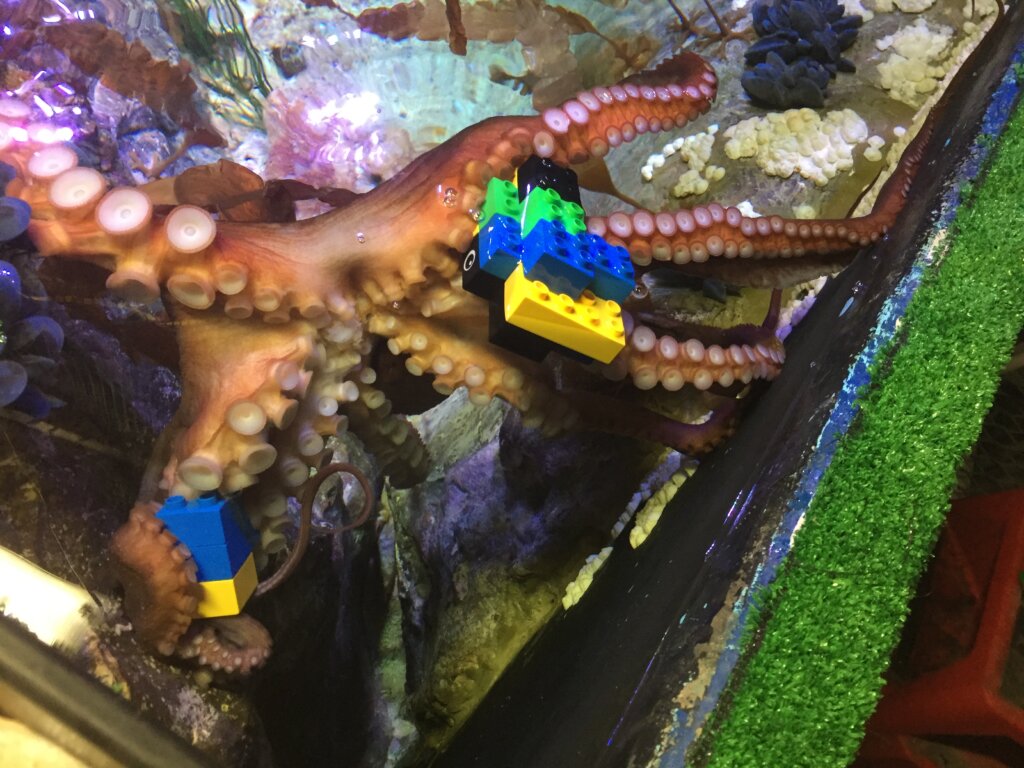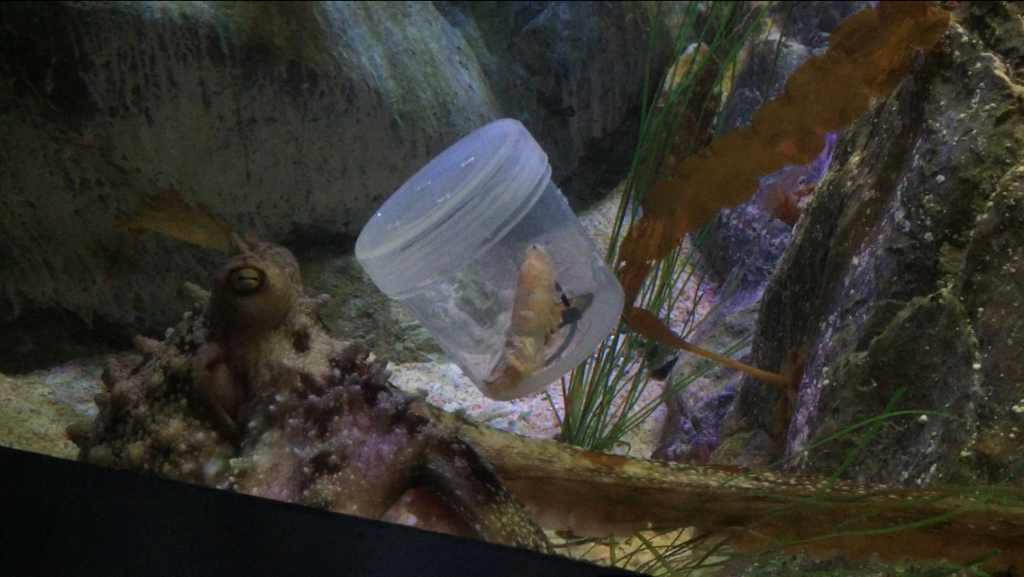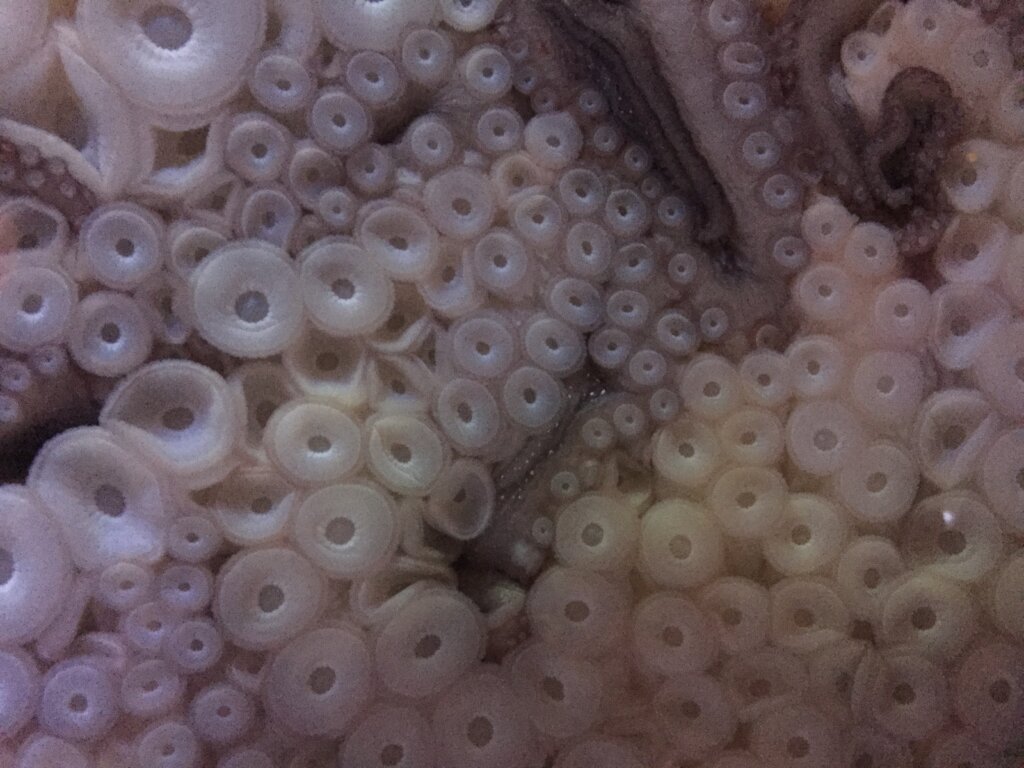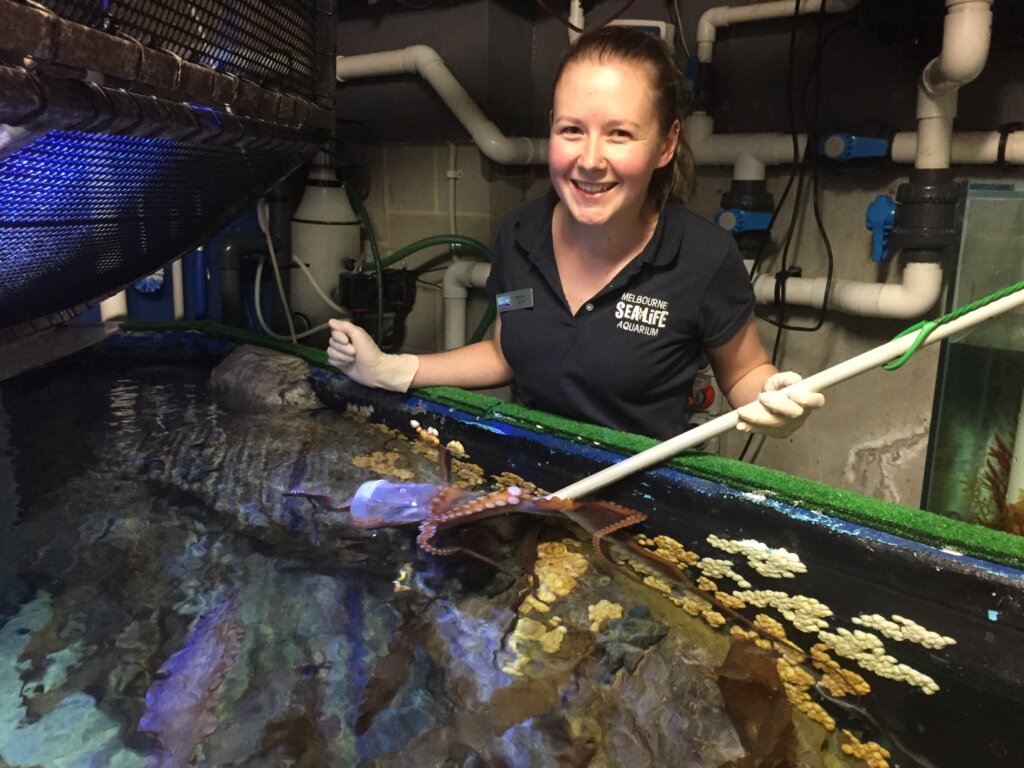The Outstanding Octopus
Classification and Basic Physiology
The octopus is a cephalopod, and is closely related to cuttlefish and squid. They have eight tentacles and a beak for a mouth. The octopus is an invertebrate meaning that it has no backbone. In fact, it has no internal or external skeleton at all allowing them to be able to squeeze through tiny gaps in their environment. They have three hearts! Two that pump blood to the two sets of gills, and one that pumps blood to the rest of the body.
Intelligence
The octopus is extremely intelligent and has been proven to be able to solve intricate puzzles as well as exhibit complex learning behaviours, including both short-term and long-term memory. Here at SEA LIFE Melbourne Aquarium we have to make sure that our octopuses are kept happy and healthy and that includes making sure their mind is kept active at all times. We do this by giving them different forms of enrichment which can include toys and games, such as Lego blocks. A common form of enrichment is teaching our octopuses to open a jar to obtain the food inside. Not only does this keep them focused on a task for some time but it also mimics natural foraging behaviours that they would have to exhibit out in the wild.
Defence
When octopuses feel threatened they can expel a jet of ink from ink sacs located between their gills. To disperse the ink quickly the octopus also expels water through their siphon at the same time. This clouds the vision of the would-be predator and allows the octopus to make an escape unnoticed.
Camouflage and Colour Change
Octopus can blend in to their surroundings extremely well which helps them to avoid predators as well as sneak up on prey. This is thanks to special cells in their skin called Chromatophores. The chromatophore cells each contain an elastic sac full of pigment which can expand or contract causing them to change colour. They can also change the texture of their skin to mimic that of the surrounding environment. By causing their skin to prick up or smooth out they can perfectly blend into their rocky or sandy backgrounds. The octopus can also change colour to communicate with other octopuses. This can be to either attract a mate or to repel rival octopuses. They can also communicate with other species of animals. To warn predators the octopus can flash bright colours to deter them. One great example is the Blue Ringed Octopus which flashes bright blue rings on its skin when provoked. This signals to the predator that this individual octopus may be harmful or poisonous and therefore shouldn’t be eaten.
Life Cycle
Octopuses are relatively short-lived animals with their life expectancy ranging from 2-5 years. Octopuses are semelparous animals meaning that they exhibit only one reproductive event before they die. Males will die shortly after mating and females will put all their energy into caring for her developing eggs that she dies shortly after they hatch. The period before death is called senescence and shows symptoms such as lack of feeding as well as loss of skin colour and elasticity. While this seems like a sad ending to the octopus’s life it is completely natural and allows the developing eggs to have the greatest chance of survival.




